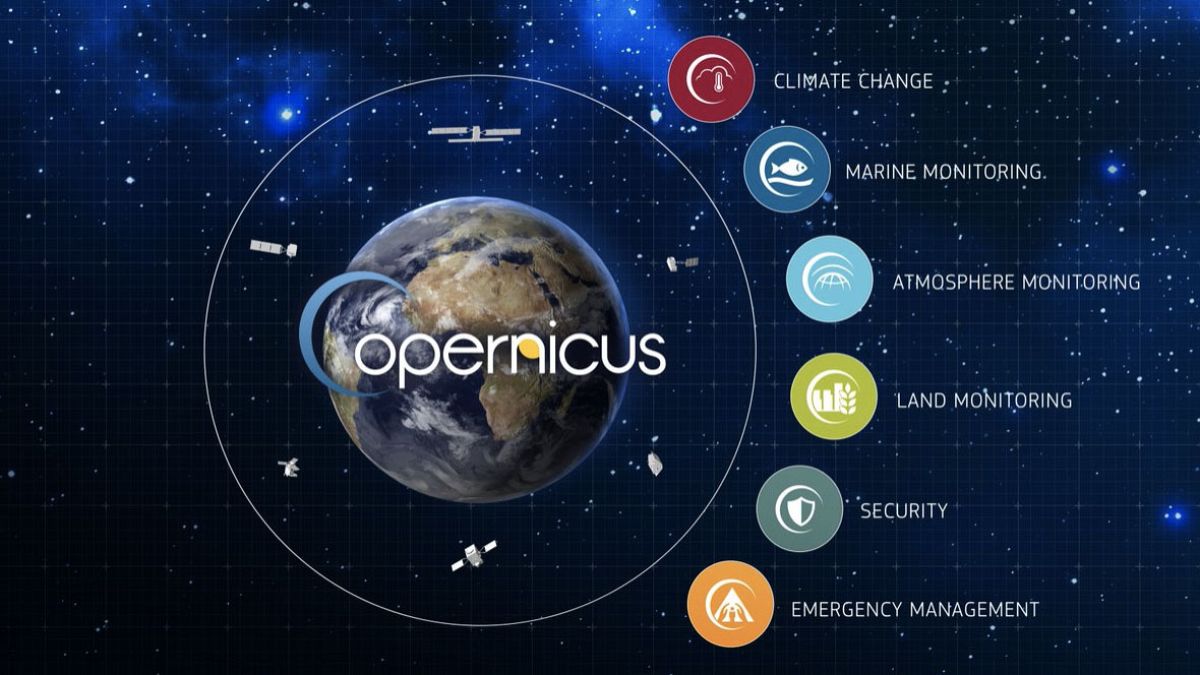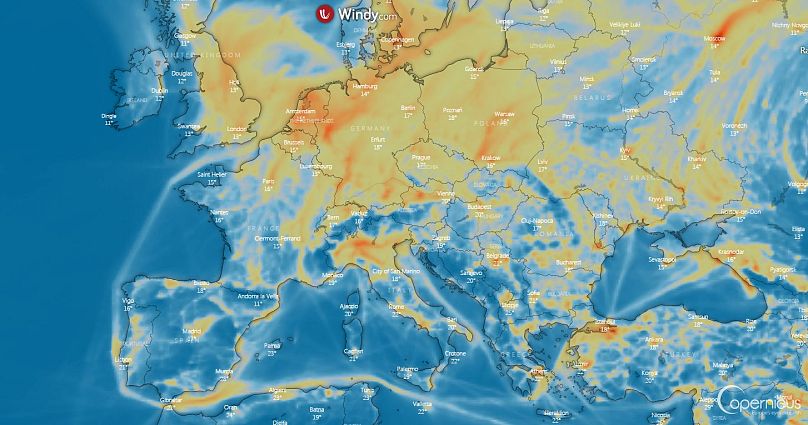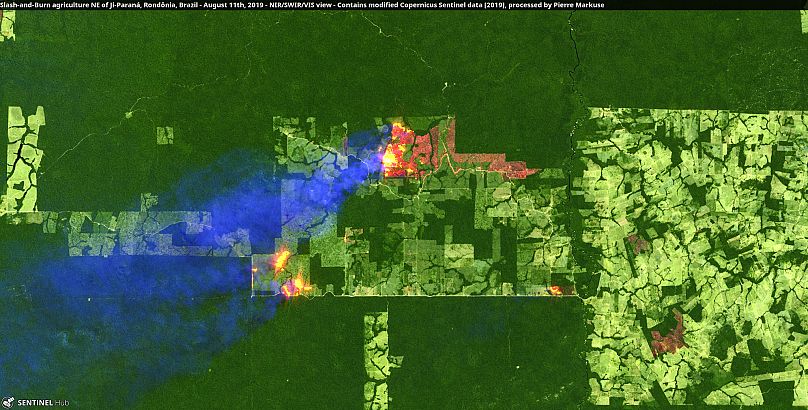The European Union's satellite and earth monitoring program can seem a complex constellation far, far away but its ever-growing services are already among us and have many possible applications.
The Copernicus Earth monitoring programme might seem a complex constellation far, far, away, but its services are already among us.
The European efforts to build an Earth observation system keep consolidating and growing further, and the landmark mission is already feeding the world with essential data to understand things like our climate, the atmosphere and solar radiation.
This freely open data is key to adapt and mitigate the effects of climate change.
Euronews has joined forces with Copernicus for our new show Climate Now, which offers updates on the state of the world's climate. It also has air quality forecasts, which have been integrated into our weather data.
Many international institutions already use its services and it is already present in our daily lives, albeit rather under the radar.
Here are some tips on how to make the most of Copernicus' data.
What is the EU's Copernicus Earth Monitoring programme?
Launched in 2014, it was the next step of the Global Monitoring for Environment and Security (GMES) programme, which was heading up by the European Commission in partnership with the European Space Agency (ESA) and the European Environment Agency.
Copernicus benefits from the extensive database of the European Center for Medium-Range Weather Forecasts (ECMWF) and both work side by side.
It had a budget of €4.3 billion euros for the 2014-2020 period. By comparison, ESA had €5.7 bn in 2019.
Copernicus collects and provides data from five satellite missions -the Sentinels- but also from ECMWF and other international agencies and institutions.
Copernicus is divided into six different sections or services.
- Atmosphere
- Climate Change
- Marine
- Land
- Security (working mainly with the border agency FRONTEX)
- Emergency
Beyond the big data collected for expert users, each service provides regular bulletins and updates that are more "regular user"-friendly. Recently, the atmosphere monitoring service has been key in detecting and monitoring the Amazon wildfires. The Climate Change service has been the first to report the record warm months we've gone through since last June.
The Copernicus services are more oriented to academics, state agencies, startups and corporations, rather than the public.
That is partly because it aims is to help the development of new startup platforms and applications based on the huge amount of data it provides. But it is also for budget reasons.
What are the real applications on a day-to-day basis?
At a time when science is telling us that we have to adapt and mitigate the current and future effects of climate change, having such a source of accurate, reliable and unbiased information is even more important.
The Copernicus services will be key to achieve the Green Deal proposed by Ursula von der Leyen's EU Commission and its carbon neutrality objectives. Pollution performances of countries can be measured in a transparent and homogeneous way.
The agency keeps developing new platforms and products for sectors like agriculture, energy and tourism.
Also, its incubator programme gives birth to new applications and it also has a variety of academic and development projects.
Copernicus for everyone
The Copernicus data is accessible via some expert platforms like the Open Access Hub or the DIAS platforms. But you need some scientific skills. It's not for dummies.
But the magic of it is that anyone with a little bit of curiosity and limited skills can dig on the Copernicus Atmosphere air quality forecasts. Its data is powering applications like Windy.com, showing air pollution worldwide as you've never seen before.
Several Earth Observation platforms are available to explore the Sentinel constellation imagery. One of the most user-friendly is Sentinel Hub, proposing even a Playground to get satellite imagery without much scientific knowledge. There are other available like Land Viewer or Planet.com.
Platforms like EOxCloudless have put together maps really simple to navigate like s2maps.eu based exclusively on cloudless photos from Sentinel 2 satellite (the most advanced optical Sentinel satellites).
You can also drop by the news sections of the different services to find out more about the latest developments and applications. If you get more interested in it, you can also join their training courses and seminars.
Ultimately you won't need to go to Copernicus, unless you are interested for a reason. Copernicus will come to you, behind your everyday apps, scientific or meteorological reports and on national and regional authorities' decisions, that might be based on its data and advice.
Euronews attended a recent press trip with the team of the Copernicus ECMWF Atmosphere Monitoring and Climate Change to get insight about its services.


